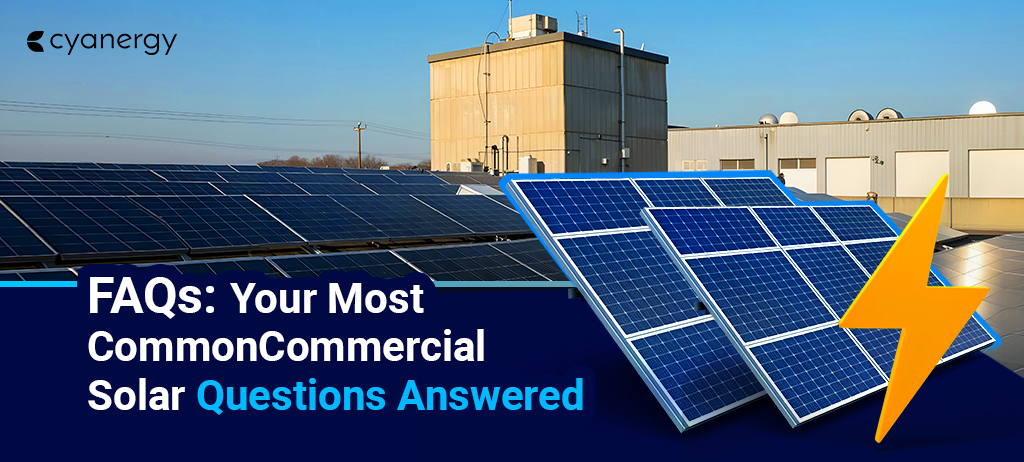Businesses and the manufacturing sector are important for Australia’s economy, helping to boost productivity, drive innovation, support exports, and create good jobs.
However, manufacturers are finding it hard to stay competitive because of rising energy costs. Many companies have seen their gas and electricity bills double in the past two years.
Electrification can solve this issue by lowering our carbon footprint. So how does electrification lower carbon footprint in 2024?
The Electrification of Industry uses renewable energy that could give Australian manufacturing a fresh start by lowering costs and enabling the production of zero-carbon goods. Let’s understand the basics first.
What is Carbon Footprint?
A carbon footprint is the total amount of greenhouse gases, like carbon dioxide and methane, that are released into the atmosphere because of what you do every day.
This includes things like the emissions from producing the electricity you use at home, which might come from burning fossil fuels like coal or gas.
It also includes emissions directly from your home, like burning gas for heating or cooking, as well as the fuel your car burns if you drive a petrol or diesel vehicle.
Even organic waste, like food scraps or yard waste, releases methane as it decomposes, which adds to your carbon footprint.
Australia’s Net-zero Target 2030
Australia’s Net-Zero Target for 2030 is a plan to reduce the country’s greenhouse gas emissions by 2030, aiming to make significant progress toward producing no net emissions by 2050.
This means cutting down the amount of carbon dioxide and other greenhouse gases released into the air from activities like energy production, transport, and industry. So that any remaining emissions are balanced out by actions that absorb carbon, such as planting trees.
To reach this goal, Australia is focusing on several steps, including expanding renewable energy sources like solar and wind, promoting electric vehicles, and improving energy efficiency in homes and businesses.
The government is also encouraging industries to adopt cleaner technologies and supporting research to develop more sustainable practices.
By working toward the 2030 target, Australia aims to protect the environment, create new green jobs, and support a cleaner, healthier future for everyone.
This is a key part of Australia’s commitment to address climate change and join other countries in keeping global warming at safer levels.
Australia’s Climate Change Strategies, 2024

Expanding Renewable Energy:
Electric Vehicles and Clean Transport:
Industry Standards for Lower Emissions:
Strengthening Communities Against Climate Risks:
Carbon Capture and Reforestation:
Supporting Research and New Technologies:
Reducing Transport Emissions

Reducing transport emissions is important for Australia to cut greenhouse gases and meet climate goals. Transport is a major source of emissions, with cars, trucks, buses, and planes all adding significantly.
To tackle this, Australia is promoting electric vehicles (EVs) with rebates and tax breaks to make them more affordable. The government is also building more EV charging stations and encouraging businesses and public fleets to switch to electric vehicles.
Improving public transport is also key. Expanding bus, rail, and tram networks can help reduce the need for personal vehicles, lowering emissions per person. Switching buses and trains from diesel to electric or hydrogen also cuts emissions in public transit.
Australia is making walking and cycling easier by adding bike lanes, pavements, and other safe paths while bike-sharing and e-scooter programs offer low-emission choices for short city trips.
Investing in cleaner fuels, like biofuels and hydrogen, can reduce emissions from heavy trucks and planes that can’t easily use electric power. Improving fuel efficiency and hybrid technology also helps make cars and trucks emit less.
Setting stricter fuel standards and creating road-use fees for high-emission vehicles encourage cleaner transport options.
Reducing commuting with remote work and online meetings also cuts travel emissions. Public awareness campaigns further help Australians make eco-friendly choices.
These actions aim to lower transport emissions, improve air quality, and make cities more liveable. Reducing reliance on fossil fuels in transport also supports energy security and a shift to a low-emission economy.
These strategies aim to help Australia cut emissions, support a greener economy, and prepare for climate change while meeting global climate targets and protecting the environment.
How Does Electrification Lower Carbon Footprint in 2024?
Electrification in 2024 will help Australia lower its carbon footprint by using electricity instead of fossil fuels like coal, oil, and gas for many activities.
Electricity can come from renewable sources such as solar, wind, and hydropower, which don’t release greenhouse gases.
By shifting to electric options in areas like transport, homes, and industry, Australia can cut down on carbon emissions and create a cleaner, more sustainable future.
In transport, electrification means using electric vehicles (EVs) instead of gas or diesel cars. EVs produce zero emissions while driving, and as the electricity grid relies more on renewable energy, the overall impact is even lower.
More EVs also mean less demand for fossil fuels, which helps reduce pollution and improves air quality.
In homes and buildings, electrification involves switching to electric appliances and heating systems, like electric stoves and heat pumps, instead of gas-powered ones.
When these electric systems use renewable energy, they produce no emissions, unlike gas appliances that release carbon dioxide.
In industry, electrification allows heavy machinery and equipment to run on electricity instead of fossil fuels, reducing emissions from factories, mines, and other industrial sites.
In some cases, businesses also use renewable-powered electric systems that cut emissions to nearly zero.
By replacing fossil fuels with electricity from renewable sources, Australia can make big progress in lowering its carbon footprint and meeting its climate goals.
This shift to electrification not only reduces emissions but also supports a cleaner energy future for the country.
Path Towards An Electrified Future| Electrification and Energy Efficiency: A Perfect Pairing

Australia can reach a net-zero future by focusing on electrification and energy efficiency. This means using less energy and shifting to electricity from renewable sources like solar and wind, cutting down on fossil fuels and emissions.
Energy efficiency is important because it reduces energy use without sacrificing comfort. For instance, energy-efficient appliances like LED lights and modern air conditioners use less power but still work well.
Better insulation and smart building designs also help, keep homes comfortable with less heating and cooling. These changes reduce overall energy needs, making it easier to rely on clean energy.
Electrification involves replacing gas, oil, or coal-powered devices with electric versions. Switching from gas heaters and stoves to electric ones, especially if powered by renewable energy, cuts emissions. Electric vehicles (EVs) instead of petrol cars also help reduce pollution in transportation.
Australia can lower its carbon footprint significantly by making these changes in homes, transport, and industry. With plenty of sun and wind, renewable energy is accessible, helping the country move closer to its net-zero goals.
Government support with policies, rebates, and incentives makes it easier for households and businesses to switch to cleaner options.
Although the shift brings changes, like a reduced role for gas and more homes generating their power, it also creates new opportunities. Companies can develop energy-efficient products, expand renewable infrastructure, and offer energy management services.
Choose Cyanergy as your electrification partner for your business! Get a free quote or talk to an expert.







